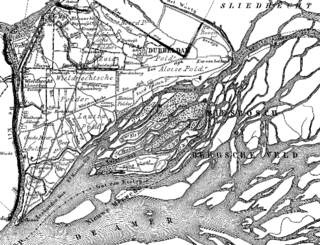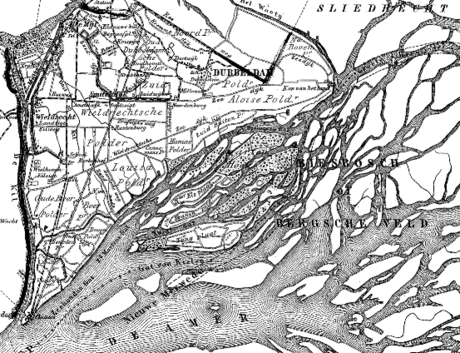The Nieuwe Merwede (Dutch pronunciation: [ˌniu.ə ˈmɛrʋeːdə]; "New Merwede") is a Dutch canal, mainly fed by the river Rhine, that was constructed in 1870 to form a branch in the Rhine–Meuse delta. It was dug along the general trajectories of a number of minor Biesbosch creeks to reduce the risk of flooding by diverting the water away from the Beneden Merwede, and to facilitate navigation and regulate river traffic in the increasingly silted-up delta.[1]


It is one of several rivers called Merwede. The most upstream is the river Boven Merwede ("Upper Merwede"), itself the continuation of the Rhine-Waal river and, until 1904, the Meuse (now the closed-off Afgedamde Maas) as well. The Boven Merwede branches near the town of Hardinxveld-Giessendam into River Beneden Merwede ("Lower Merwede") to the northwest and the Nieuwe Merwede to the southwest. The Nieuwe Merwede joins River Bergse Maas near Lage Zwaluwe to form the Hollands Diep estuary, and separates the Island of Dordrecht from the Biesbosch National Park.
There are no bridges or tunnels crossing the Nieuwe Merwede, but there is a car ferry from the Island of Dordrecht on the west at "Kop van 't Land" to Brabantse Oever, Werkendam (Biesbosch).
References
External links
Wikiwand in your browser!
Seamless Wikipedia browsing. On steroids.
Every time you click a link to Wikipedia, Wiktionary or Wikiquote in your browser's search results, it will show the modern Wikiwand interface.
Wikiwand extension is a five stars, simple, with minimum permission required to keep your browsing private, safe and transparent.

